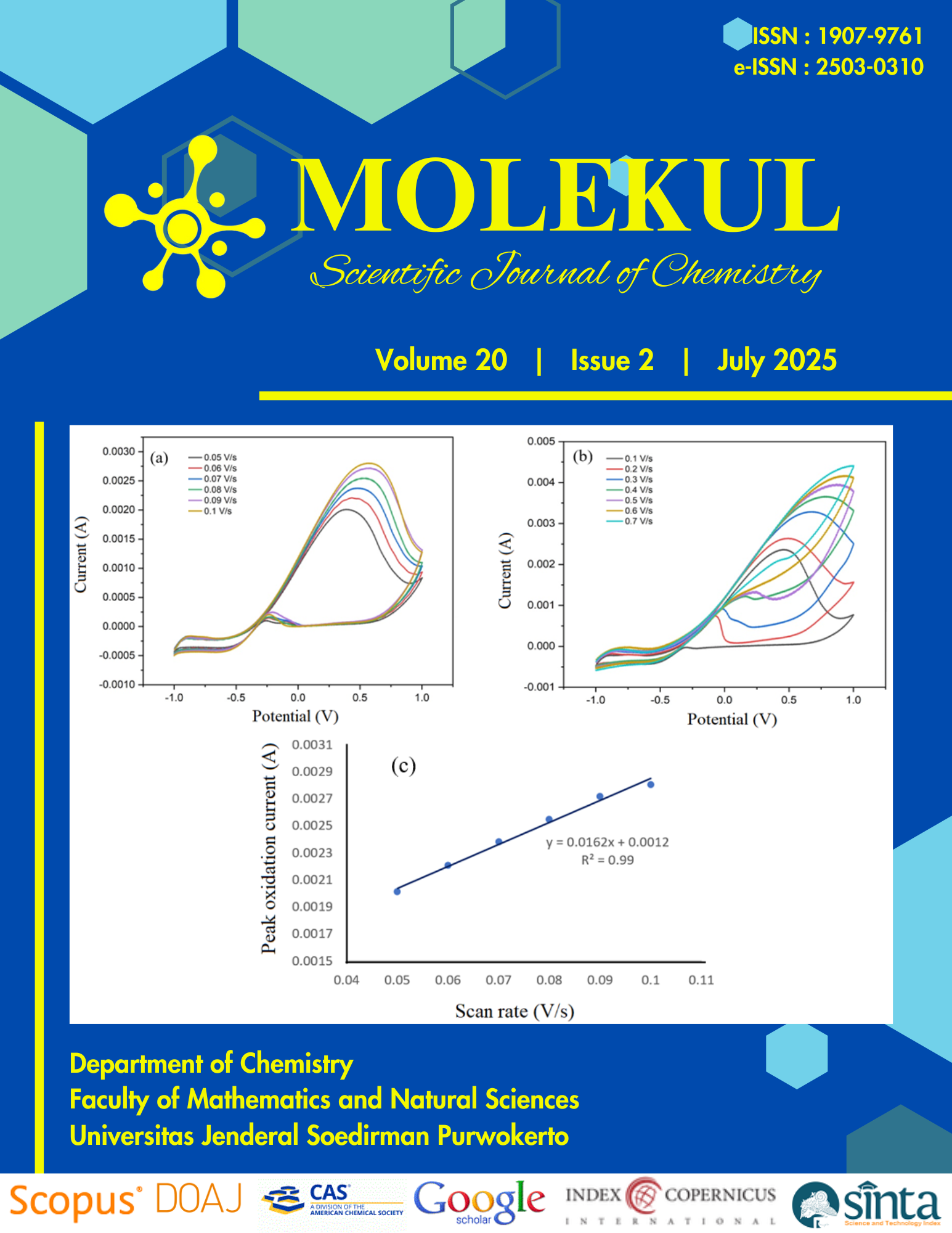Dammarane-Type Triterpenoids from Twigs of Aglaia Foveolata and Their Antibacterial Activity
Abstract
ABSTRACT. The Aglaia species, which contains triterpenoids, is the most numerous in the Meliaceae family. Aglaia foveolata (A. foveolata) is a type of plant that has many benefits, as medicinal ingredients. The potential of this plant is inseparable from the content of various bioactive compounds. This study aims to isolate, characterize the active compound from the twigs of A. foveolata and test its activity as an antibacterial. Three dammarane-type triterpenoids were isolated from the A. foveolata twigs which is, namely dammar-24-en-3β,20-diol (1), an epimeric mixture of shoreic and eichlerianic acid (2, 3). Their chemical structures were determined based on spectroscopic data using infrared, high-resolution mass spectrometry, and including one and two-dimensional NMR techniques, as well as through data comparison of the reported compound. Compound 1 was reported for the first time to be successfully isolated from this species. All these substances were tested for the first time for their antibacterial activity against two Gram-positive bacteria Staphylococcus aureus and Bacillus subtilis and two Gram-negative bacteria Escherichia coli and Pseudomonas aeruginosa, through this study. Compound 1 was inactive, the epimeric mixture of 2 and 3 showed moderate antibacterial activity with a minimum inhibitory concentration (MIC) value ranging from 31.7 to 126.6 ppm, particularly against S. aureus with a MIC value of 31.7 ppm.
Keywords: Aglaia, Elucidation, Isolation, Spectroscopy, Bacterial
Authors agree with the statements below:
- Authors automatically transfer the copyright to the MOLEKUL journal and grant the journal right of first publication with the work simultaneously licensed under a Creative Commons Attribution 4.0 International License (CC BY 4.0).
- Authors are able to enter into separate permission for the non-exclusive distribution of the journal's published version of the work (e.g., post it to an institutional repository or publish it in a book), with an acknowledgment of its initial publication in this journal.













